|

Hardwood Tree







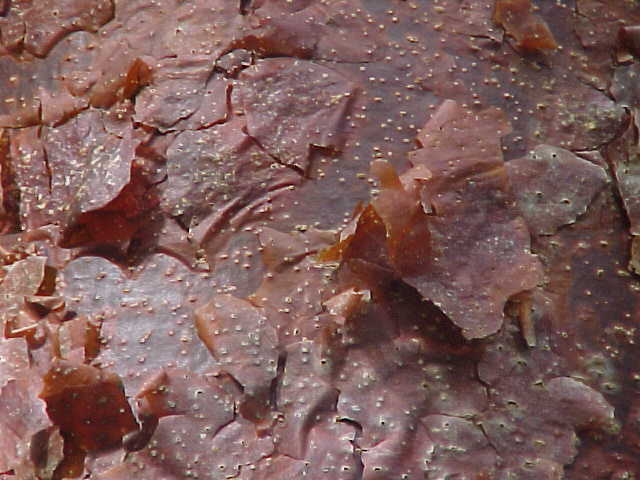





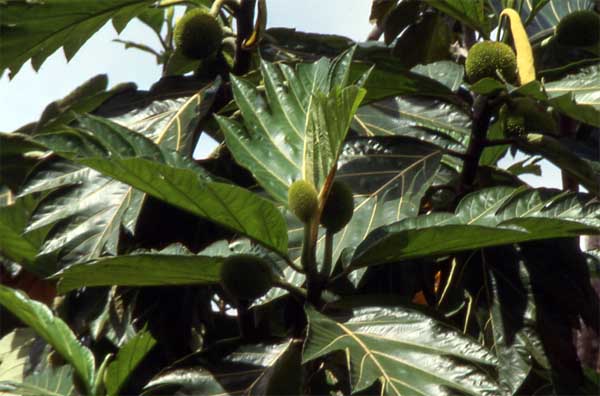


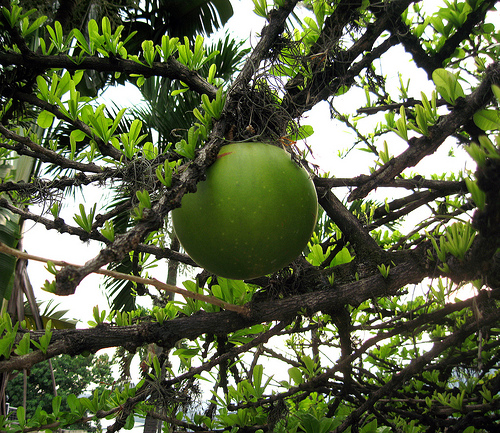



This is a page that is growing as fast as the forest here. There are just SO many types of trees that it is time to divide this into sections. I will start with "Wood trees" and divide another section for "Fruit trees". There are both types of trees that have medicinal properties, but I will keep that listing in the "Medicinal plant" section.
To navigate this site you simply hold the cursor over a picture to identify the category then click on that picture to take you to more information or at least a better picture of it.


Acacia (Acacia collinsii)
(Swollen Thorn Acacia, Bullthorn Acacia) [huas-canal, Mayan] This species of acacia lacks the bitter alkaloids that other plants produce to
prevent animals from stripping their leaves, which would slow their growth
and allow competing vegetation to shade them out. Colonies of stinging ants (Pseudomyrmes ferrugines)have taken over
this defense role, occupying the hollowed-out thorns and attacking anything
that touches the tree: ravaging insects, browsing mammals, even competing plants. Vines and branches that get too close are
pruned back, and seedlings that sprout under the canopy are removed, creating
a clearing around the tree. In return,
the host acacia supplies its guardians with rich nutrients from specialized
bodies on its leaves, for which there is no known function except to provide
food for the symbiotic ants.


Allspice
(Pimenta dioca)
The All spice tree is one of the best well known by the people of the region
of el Peten and Tikal, and it was undoubtedly by the Mayans, because
it is a Home medicine, and it is used to seasoning food. It was also highly prized by the Spaniards who encountered it here.
To recognize it in the forest, the trunk is smooth very similar to eucalyptus, the
stalk not always straight, then it can be identified by its smell, which
distinguishes the tree. The leafs when they are crushed have a strong Pimienta Gordas smell
which can be confusing. The flowers are fragrant with a 6 cms. of diameter.
The fruit is a berry of 10 cms. with 1 or 2 seeds. The tree
can reach 20 mts. High, and 30 or 40 diameter.
This tree lives 0-400 under sea level in humid subtropical forest,
and very humid subtropical forest, like Peten, Belize, Quiche, Alta
Verapaz, Izabal, from South East of Mexico to Panama.
Allspice wood is brown reddish.
It is one of the harder woods of Guatemala. It is commonly used
but as ornamental and to produce pepper, the density is appropriate
to produce a excellent degree coal. It is possible that the Mayans used it in this way and called
it Nabacuk.


Breadfruit (Artocapus altilis)
[mazapan] Originally introduced from Tahiti (via England and Captain Bligh of "Mutiny on the Bounty" fame). Probably not surprising is that when
it is deep fried, it tastes just like bread or almost a nutty taste.


Cacao (Theobroma cacao)
(Cacao) Many tribes thought the cacao plant came from the gods, hense the name Theobroma, meaning "food of the gods." It was used as a currency by the Aztecs and Mayans. After the Spanish conquest of the country in the mid- to late 1500's, cacao became the most important cash crop in the country. Throughout the 1700's the seeds were still used as currency. Coffee soon replaced cacao as the leading export crop, so that by the late 1800's cacao production had virtually ceased.


Caimito amarillo
(Pouteria caimito)
Pouteria is a genus related to Manilkara, another genus that produces hard and heavy woods (such as bulletwood) much used in heavy, outdoors construction.


Calabash(Crescentia cujete)
[Huingo] Native people in the Amazon call this large green fruit "Huingo". It is inedible but very useful and widely grown. From the size of a plum to a watermelon, the fruit may be harvested. It is then halved and dried out to make an impermeable container good for a cup or bowl. Carvers like to make intricate designs on the outsides. The fruits pulp is used for respiratory problems (asthma). This calabash should not be confused with the calabash vine which is the source of the gourd used for calabash smoking pipes like the one used by Sherlock Holmes.


Ceiba Tree (Ceiba pentandra)
[Silk Cotton Tree, Yaaxch in Mayan] Guatemala's national tree and a tree that has played an important spiritual role to people in the circum-Caribbean region.

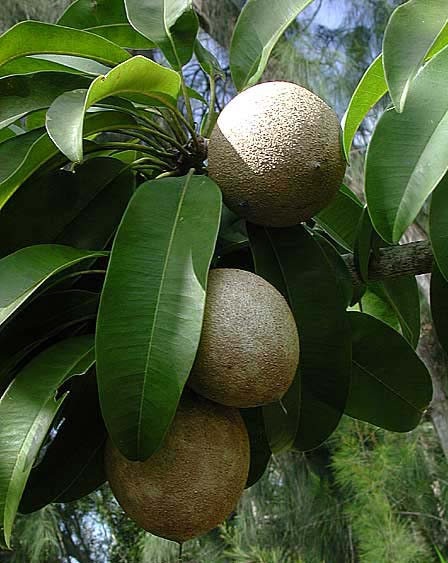
Chico Sapote
(Manilkara zapota)
The Maya called it Sak-ya. The sapodilla tree is the source of a sticky substance that is tapped for the base for chewing gum before
synthetics were introduced called "Chicle". Chicle was the major export of the Petn jungle during the first half of the 20th century. A few
countries, mainly Japan, still import chicle, which, in turn, provides a source of income for those chicleros living in or near the forest. Like
the rubber tree, which also grows wild in the Petn, the sapodilla must be tapped carefully to insure that it will remain alive to provide
chicle over a period of many years. The Sapodilla Tree is a big one, sometimes 40 mts. high, often its trunk is very thick, and the bark is
brown with gray spots, moderately smooth and deeply fissured. This tree lives at 0 to 1200 meters above sea level in dry subtropical forests,
humid subtropical forests and very humid subtropical forest. Its edible fruit, named zapote, tastes like a pear that has been soaked in brown
sugar and is delicious.

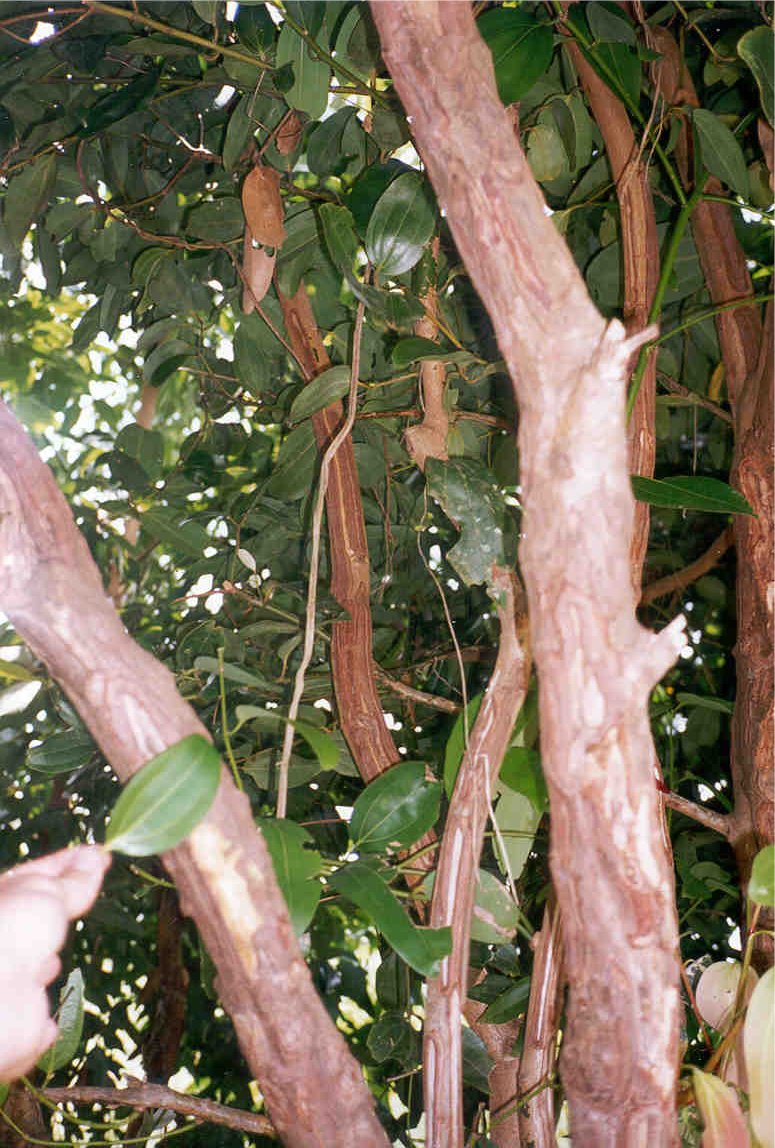
Cinnamon (Cinnamomum verum)
Cinnamon bark is widely used as a spice for cooking.For cultivation, a tree is grown for two years and the it is coppiced. The next year a dozen of so shoots will form from the roots. These shoots are then stripped of their bark and left to dry. Only the thin inner bark is used; the outer woody portion is removed, leaving metre long cinnamon strips which curl into rolls on drying.


Coconut (cocos nucifera)
Believe it or not the coconut produces a beautiful hardwood that is good for furniture as well as all its other benefits.


Guanacaste (Enterolobium cyclocarpum)
Another giant among giants this is known for its large proportions, its expansive, often spherical crown, and its curiously shaped seedpods. It is widely grown as a shade tree to shelter coffee plantations and for shade and forage for cattle; it also improves soil fertility by nitrogen fixation. Guanacaste germination rates at nearly 100% seedlings then grow rapidly, often reaching over one meter in height in their first year of life.


Gumbo Limbo(Bursera simaruba)
["chacah", ka-ka h", or "hu=kup" in Mayan] Also known as the Chino, Naked Indian, Gumbo-limbo or Turpentine tree, the berries are sought by fruit eating birds. The bark has a grayish resin which tastes like turpentine. The bark, gum, and leaves are much esteemed as home remedies. The resinous gum has been used as incense, adhesives for broken dishes, as a protective covering on canoes, and to repel insects and worms.
A fast growing perennial to 3-5 feet tall with yellow flowers on long slender spikes. Grows in zones 3-8. Taken as a tea, it is useful for liver, kidney and bladder problems. It is also a healing herb for mucous membranes and it's astringent properties help stop bleeding. The plant also produces a yellow/gold dye.


Hormigo(Platymicium dimorphandrum)
The Hormigo is an endangered tree that grows in humid forest zones. It is used commonly to make musical instruments, such as the keys
of the marimba. The Hormigo, reaches 25 to 30 meters in height and a diameter of 60 or more centimeters. Its bark is smooth, straight and cylindrical. The bark is brown gray and fissured in a longitudinal form. Its wood is reddish with clear pigmentation, it is strong
and compacted, durable and beautiful sounding when struck. The top is thin with opposing uneven leaves. Its yellow flowers grow in bundles. Its fruit are small membranous smooth vines, and have only one seedling. It grows in Belize, Guatemala, El Salvador and Honduras.
In Guatemala it grows in Rio Dulce, El Petn, Alta Verapaz, Baja Verapaz, Izabal, Chiquimula, Jutiapa, Escuintla, Suchitepequez, Retahuleu, Quetzaltenango and in Huehuetenango.
Click on the tree for the Mayan tale of the Hormigo.


Mahogany (Punab)
(Swietenia macrophylla)
A less common in the wild tropical tree is the mahogany which is called "Caoba" here. It is farmed locally around Rio Dulce on large finca's. A prized hardwood used to make
fine furniture that takes up to 80 years to mature. It can grow to be 50 meters tall (100 feet) or more. Its prominent roots, called gambas,
are large supporting buttresses at its base, spanning up to 4.5 meters (20 feet across) on the forest floor. The Mahogany has a dense top, with
alternating leafs composed of 8 to 12 leaves, of a brilliant green hue. Never numerous, this tree has become very scarce due to its harvesting
for export and its slow propagation. The mahogany has small whitish flowers and dark, pear-shaped seedpods. The fruit is a capsule, 12 cms. large,
reddish, salmon or yellow-rose. When the ripe fruits fall and become scattered by animals, the rich mulch of the forest floor allows them to
germinate and sprout, beginning a new cycle of life. It is found in humid forests between the latitudes of 0 to 500 meters above sea level.
The temperatures at which these trees prosper is between 20C to 30C. The Mahogany has many uses, such as for traditional medicine and to make
musical instruments.


Mango(Magnifera indica)
The mango tree is erect, 30 to 100 ft (roughly 10-30 m) high, with a broad, rounded canopy which may, with age, attain 100 to 125 ft (30-38 m) in width, or a more upright, oval, relatively slender crown. In deep soil, the taproot descends to a depth of 20 ft (6 in), the profuse, wide-spreading, feeder root system also sends down many anchor roots which penetrate for several feet. The tree is long-lived, some specimens being known to be 300 years old and still fruiting.
There is a single, longitudinally ribbed, pale yellowish-white, somewhat woody stone, flattened, oval or kidney-shaped, sometimes rather elongated. It may have along one side a beard of short or long fibers clinging to the flesh cavity, or it may be nearly fiberless and free. Within the stone is the starchy seed, monoembryonic (usually single-sprouting) or polyembryonic (usually producing more than one seedling).


Matilisquate(Tabebuia rosea)
Matilisguate is a local name for the Tabebuia species here. The tree grows in the humid forest and there are 100 species of them. Uvia de Oro (Tabebuia chrysantha) is another species here. locally The species range from northern Mexico and the Antilles south to northern Argentina, including those on the islands of Hispaniola (Dominican Republic and Haiti) and Cuba.
It grows at an altitude of 0 to 1300 meters above sea level and it may thrive in temperatures between 17C to 30C. The main use of this tree is for traditional medicine. The Matilisguate is a medium level tree. Its bark is straight. The Matilisguate may reach 30 meters in height and 70 cms.
in diameter. It has a prominent top. The bark is fissured in parts and it is rough and gray. The wood is yellow and in some parts brown with strong and durable texture. Its fruit grows in long capsules with a lot of seeds inside. This
tree is found here in Guatemala, Mexico, Central America, Colombia, Ecuador, Venezuela and The Antillas.

 Rubber Tree
(Hevea brasilensis)
["yax-ha" or "kiik-che" in Mayan] Hevea brasiliensis is the source of virtually all the world's rubber production. Cutting the bark of this tree releases the latex which is then collected, preserved, and stabilized. The latex is located in the inner bark of the tree and flows in the vessels of the tree. Latex is thought to be a defense against insect predators for the tree.
In recent years, after the rubber tree has finished its 40 - 50 year productivity as a rubber producer, the wood is now being used for making fine furniture.
To read more on the Hevea brasilensis, go to the "Useful tree" page.


Sangre de Grado(Croton lechleri)
[Arbol de Sangre]Sangre de grado is Spanish for "Blood of the Dragon". It is common over the local area and when the trunk of the tree is cut
or wounded, a dark red sappy resin oozed out as if the tree was bleeding - earning its local name. Magical not only in the Popol Wu with the
story of the Hero Twins, but also in its healing properties.
Click on the tree for more information.

 Santa Maria
(Callophylum brasilensis)
The Santa Maria Tree grows in humid and dry forest zones at an altitude
of 0 to 1200 meters above sea level. This tree has many uses: medicine, foraging, ornamental
and good shade. The Santa Maria is a tree that grows 40 meters high and 1 meter
in diameter. It contains a yellow latex. Its brown bark is finely fissured.
Its wood is yellowish externally with a reddish or rosy inside that is popular for ship building and
cabinetry. Its fruits are fleshy with just one round, green and
yellow seed. It grows in the south of Mexico and in all Central America throughout the Northern region of South America.

 Zapotón
(Pachira aquatica)
["poponjoche", "uacoot", or "ya" (Peten, Maya)] White and odorless fat used in industry is extracted from the seeds. In Nicaragua seeds are roasted and eaten, having a taste similar to chestnuts. In Mexico the seeds are much sought after for their nutritional value. Seeds falling in the water feed fish and turtles. The trunk bark is used to caulk ships and make ropes, and also provides a dark red dye to tint sails, mooring ropes, and fishing tackle. Paper, boxes, crates, toys, and some carpentry items are made with the white and soft wood.

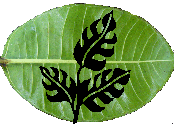

|
|









































